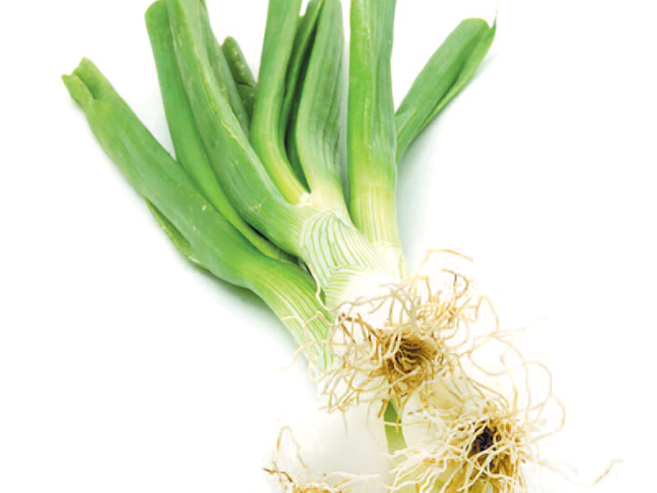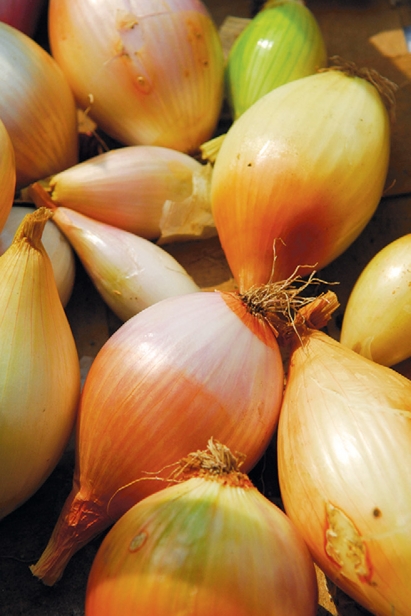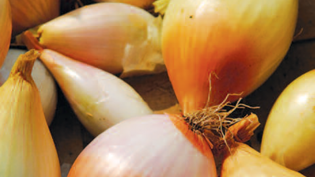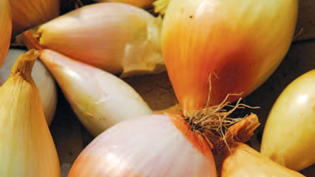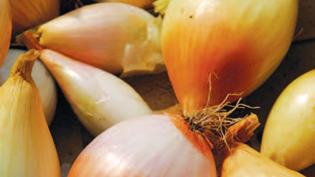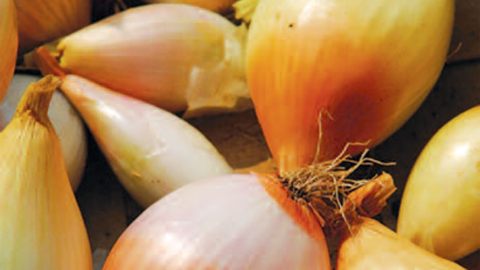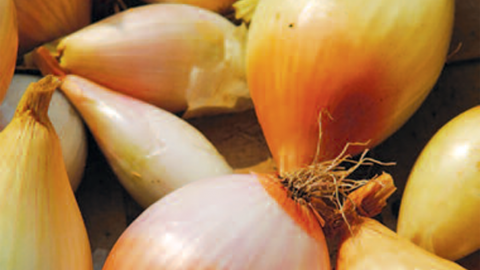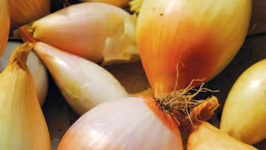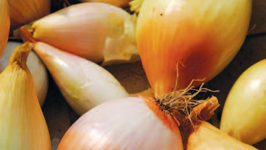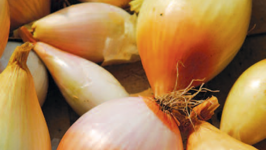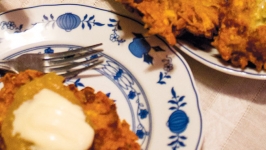Cooking Fresh: Onions
I’m friends with a farmer who is fixated on onions. Every farmer I know has at least one plant they fawn over—their favorite to grow.
She loves onions because they take the whole season. Not like salad or radishes, in and out in a matter of weeks; onions start and end the season with her. She plants the little nigella-like seeds first thing in February. Little green wisps poke straight up from the soil block. One little green thread up close or a cloud of green when viewed from afar. Every time she walks by a little pass of the hand brushes them back, strengthening their cells and releasing the faintest waft of onion.
All of them start like this. The sweet Ailsa Craig, the strong Spanish storage onion, the long Lincoln leek, the Italian disc-like cippolini, the purple-fleshed shallot, the deep crimson red onion. They all stay in the greenhouse until the ground is fully thawed. All can take a bit of a frost and so are less delicate than the bulk of spring green leaves.
Through spring and early summer, those little wisps grow and become like chives on steroids. Thick tubes with a cell structure that always reminds me of succulents or a high ponytail atop the onion’s head. That bulb grows above the ground with a knot of roots reaching into the earth. It is this time of year that the onions require little care from my farming friend. As long as they are kept free of weeds (mostly) and have enough water they will wait happily while other crops take her attention.
The onions, before the solstice, absorb as much energy as possible to grow the bulb. In the plant’s mind it is growing that bulb to store energy through the winter. Onions are biennials and so will die back and use the reserves in the bulb to send up a flower shoot in year two. That flower will produce seeds to propagate.
After the solstice the plant senses its opportunity to absorb solar energy dwindling and starts to cut off energy to those green fingers coming out of its head. The greens die back. Paper forms around the bulb, thickening its skin for the winter that is coming.
At this point the bulbs will not get much bigger. So they are pulled from the ground and left to cure in a dry, cool, dark barn. The paper gets thicker and the greens shrivel. These onions are ready to go. Ready to be sold at market or stored throughout the winter.
All of this is true except for the sweet onions. Sweet onions contain roughly the same amount of sulphuric acid as storage onions, but they also house much more water in their cells—diluting the pungency associated with onions and leaving the impression that they are therefore sweet.
That high water volume makes sweet onions less ideal for storage—more prone to rot. These onions are best eaten fresh in the middle of the summer. Some eat them like apples. I do not. I’ll take them raw in a salad or battered for my once-a-year onion ring fry up. Some day I will make a Bloomin’ Onion™, but it hasn’t happened yet. Also please note that while you can use sweet onions to make caramelized onions, it will take longer (cooking out even more water) and be no more sweet (they don’t have more sugar). So while not ideal, caramelizing and freezing is a great way to preserve sweet onions. Better than storing in your basement with fingers crossed that something won’t go awry.
After the onion harvest and the days of curing, the onions simply wait patiently. They are steady friends to take to market each week. The corner of my friend’s threetent market stall is always dedicated to onions in vast array of colors and shapes. Yet so often the onions are passed over in favor of the more mercurial produce. “Always the bridesmaid; never the bride,” my friend will say as she packs up their crates to head home.
While it is true, onions form the backbone of many dishes, they can also be stars in their own right. Fall is my favorite time to showcase them. By this time, I’m through with raw, sweet onions. I’ve eaten enough salad for awhile. My eyes turn toward long, slow-cooked dishes. I want something stewy. I want something with a bit of fat, which always craves a jolt of acid to perk it up. I want something that will make me want to cuddle in after a walk in the cold.
Onions can do this. My three go-to dishes all require a bit of time, but it is mostly inactive and so unlikely to sap my energy unduly. Leaving enough space between the start of the dish and the end of it to allow my mind to wander back to the February morning seed-starting, the late March transplanting, the August harvest and the fall markets. These onions have been along the entire time. My friend’s ritual is to eat the last onion on the day the next season’s onions are started, to say goodbye and hello simultaneously.


